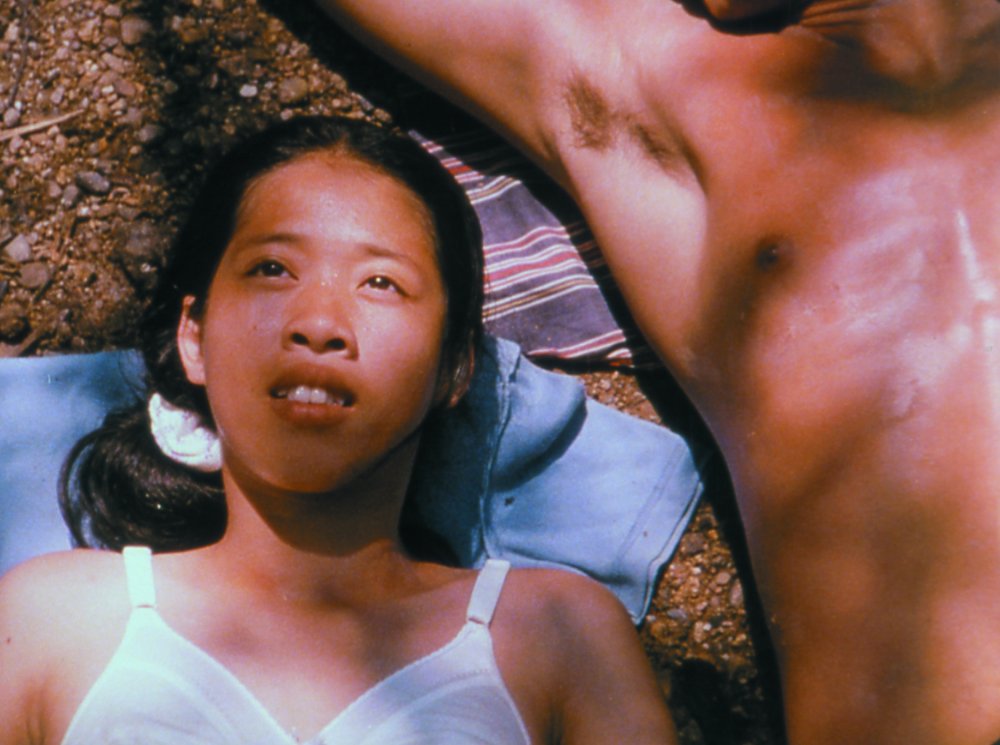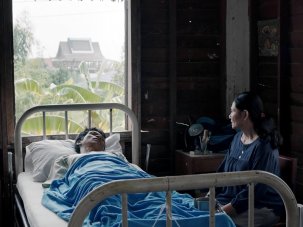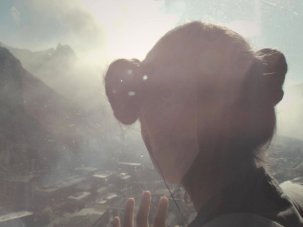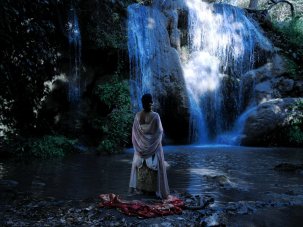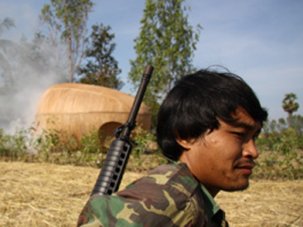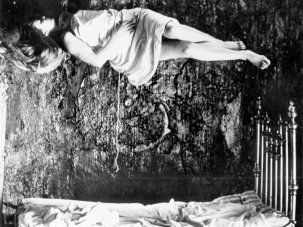Roong lies on her side, her head nestled in her lover’s armpit. Speckled with sunlight and drops of perspiration, she dips in and out sleep, lulled by the soft murmur of the river at their feet. Her profile, framed in close-up, is torn between lingering bliss and mounting sorrow as reality comes creeping back into her thoughts, contaminating the lovers’ sensual jungle escape. A tear rolls down her cheek and she turns to face the sun, looking straight into the camera. Her gaze pierces right through me, provoking a surge of emotions just as the screen cuts to black.
Cemetery of Splendour opens at UK cinemas on 17 June 2016.
A Night with Apichatpong Weerasethakul screened at Tate Modern 9-10 April 2016.
Weerasethakul’s Primitive video installation is currently on show at Tate Modern’s The Tanks.
These are the closing moments of Apichatpong Weerasethakul’s 2002 breakthrough Blissfully Yours, screened halfway through Tate Modern’s 16-hour marathon of the director’s work. After the film ended at 7am, there was a short break, as there had been roughly every two hours since 10pm. I headed outside, walking through the Tate’s deserted hallways with Roong’s weary expression etched in my own fatigue-addled mind. As I mulled over her ambivalent stare, which struck me as a potent affirmation of life’s pleasures alongside the sobering shocks that must conclude every idyll, I was greeted by a sight wholly unexpected on a London morning in early April: a dazzling dawn. The night had been freezing cold and it felt as if the golden radiance I’d just finished admiring in the Thai jungle had seeped out of the screen and was now enveloping the Thames and the buildings along the north bank, an invigorating feeling of synchronicity reinforced by the city’s Sunday-morning quiet.
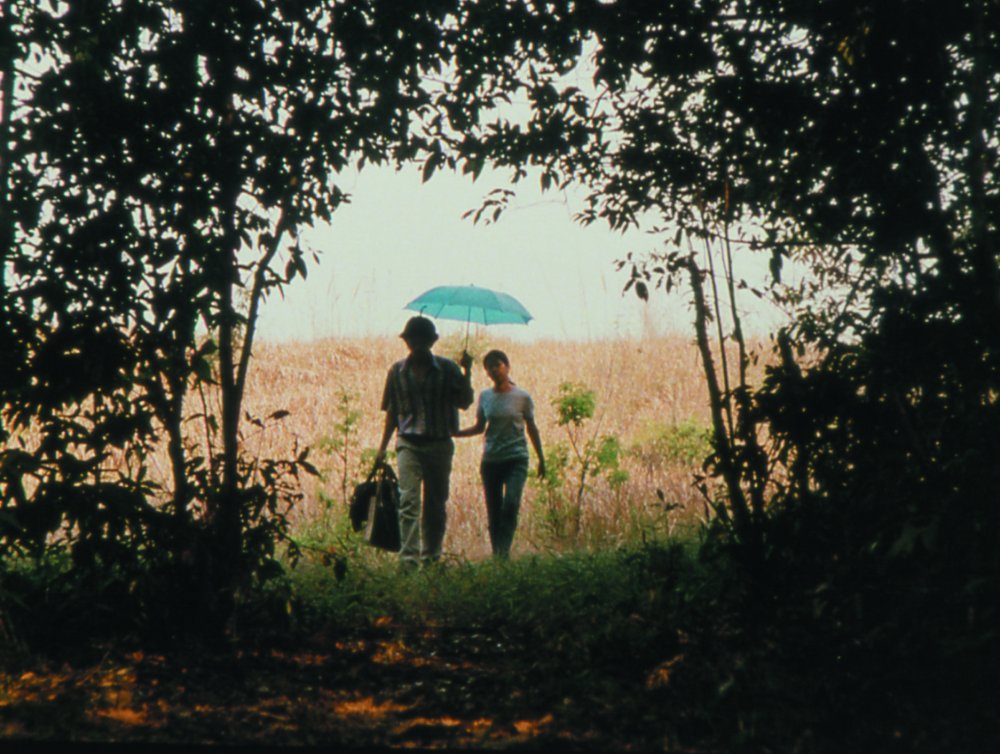
Blissfully Yours (Sud Sanaeha, 2002)
It was just one of the myriad parallels, associations, recollections, reveries and dreams that I was overcome with during the near-integral Apichatpong retrospective the Tate held over a single weekend (8-10 April), starting Friday with his two most recent films – Cemetery of Splendour (2015) and its companion short Vapour (2015) – and continued the next night with five features and 29 shorts screened in succession. Despite the director’s understandable reservations about ploughing through his filmography in this manner, which obviously precludes the careful consideration all artists wish for their work, there is something about Apichatpong’s oeuvre that rewards such binge-watching.
His singularly personal filmmaking is fuelled by the notion – propounded by Buddha as well as Socrates, to name but the two most influential – that an understanding of the world must necessarily begin with an understanding of one’s own self. It’s this driving force that generates the countless recurring elements within and across his films, constructing an organic cinematic universe that grows more complex and wide-reaching with every new release. Apichatpong’s darlings have nothing to do with those of the likes of Wes Anderson or Yorgos Lanthimos, solipsistic (as opposed to introspective) auteurs more interested in refining rather than elaborating their idiosyncrasies. Always familiar but never repetitive, each of his films grants a deeper appreciation of the others by bringing the viewer closer to his wavelength, which can reach baffling levels of abstraction in its endeavour to probe some of the most fundamental questions concerning our existence. The more one recognises and assimilates his references, the easier it becomes to accompany him on his explorations and share their insights.
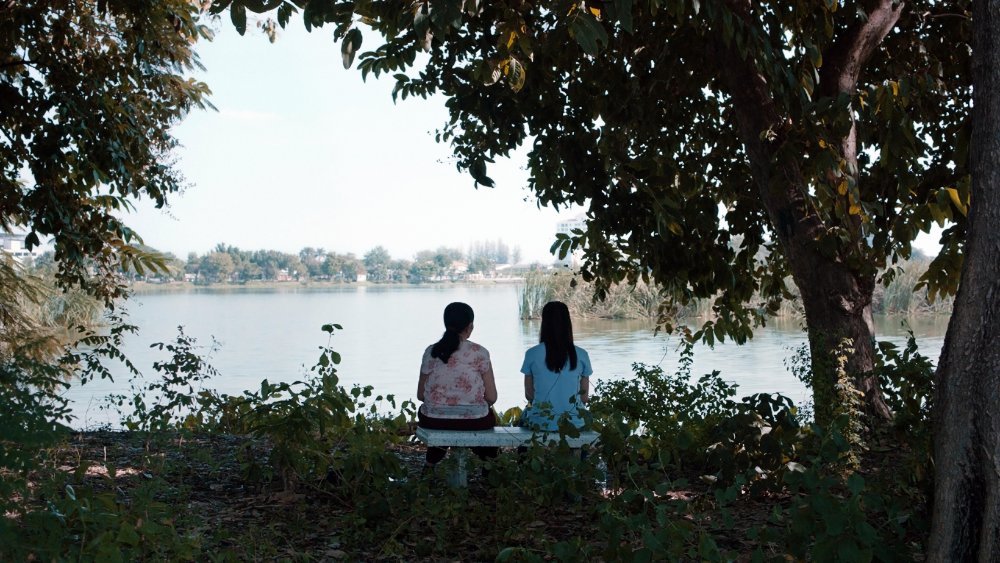
Cemetery of Splendour (Rak Ti Khon Kaen, 2015)
In his introduction to the marathon, Apichatpong invited the audience to not “think too much”. As exhaustion escalated over the many hours, following his advice became inevitable and, considering the instinctual nature of his filmmaking, highly beneficial. Most of the shorts don’t have title sequences and they gradually merged into a whole that I pleasantly drifted through in my hypnagogic state, abandoning myself to the whims of my subconscious, spurred on by the images on the screen. The experience was not unlike the one conveyed by the retrospective’s penultimate film, A Letter to Uncle Boonmee (2009).
Effecting a ghostly POV, the film’s ethereal camera floats through various rural houses while different voiceovers read a letter from Apichatpong to Uncle Boonmee, a man whose traces Apichatpong tried to uncover along the Thai-Laotian border during his investigations into the region’s conflict-ridden past. (These were brought together in the multimedia project Primitive, which includes this short as well as the 2010 Palme d’Or winner Uncle Boonmee Who Can Recall His Past Lives.)
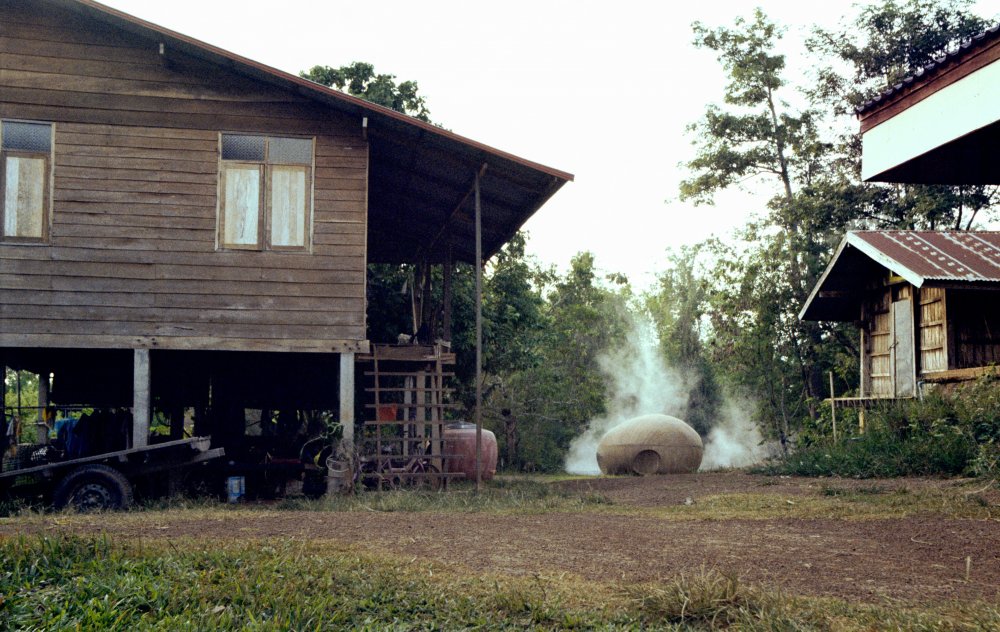
A Letter to Uncle Boonmee (2009)
Credit: Courtesy of Kick the Machine Films
A Letter plays with memory, both personal and national, real and imagined, and the many windows the phantom protagonist floats past, curiously peeking through and sometimes traversing them, serve as portals connecting these different planes. At one point three adjacent windows are framed in a frontal long shot from within a pitch-black room. Seemingly suspended in mid-air, they form a glowing rectangle conspicuously evocative of a cinema screen, an almost celestial apparition inviting reflection on film’s potential and limitations as a means of accessing and representing memory. And, by extension, on the medium’s fraught relationship with notions of authenticity and truth, a long-standing concern of Apichatpong’s cinema.
Mesmerised by this gorgeous mise en abyme, I wondered whether it had been inspired by Hou Hsiao-hsien’s The Boys from Fengkuei (1983), which includes a scene that prompted similar thoughts when I saw its new restoration at last year’s Venice Film Festival. There, three teenagers go searching for a porn cinema but instead end up spectating a grim cityscape through the gaping hole on the side of an unfinished building – another rectangle illuminating a darkened space. Windows are one of the most regular features of Apichatpong’s mise en scène, but it’s only then that I became aware of the centrality of the window-as-cinema-screen motif in his work. It crops up throughout, most obviously in the many windscreen POVs that have conveyed promises of exploration and discovery ever since the opening of his debut feature Mysterious Object at Noon (2000).
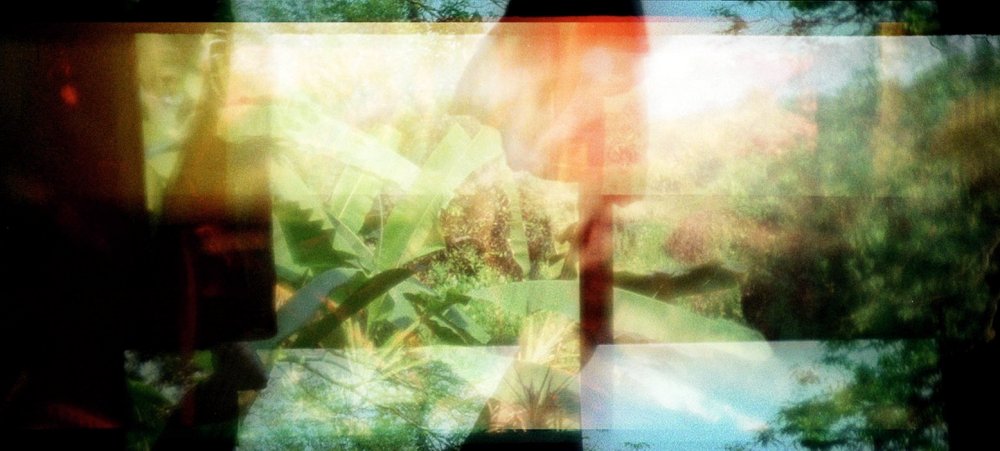
Ashes (2012)
Credit: Courtesy of Kick the Machine Films
In the lovely home movie Ashes (2012), it’s used to express frustration with the medium of cinema itself. In voiceover, Apichatpong describes a dream in which he tried to recreate the beautiful visions from another dream within his dream using a 2B pencil. Ashes feels like an equivalent attempt with a 35mm Lomography movie camera. Taking advantage of the camera’s hand-cranked mechanism and Lomography’s characteristically vivid analogue colours, Apichatpong shot various impressionistic scenes in a stuttering frame rate and stitched them together to approximate the fragmented, evanescent nature of (dreamed) memories. When the film chances upon a window, again framed frontally with its edges parallel to those of the screen, the image succumbs to a paroxysm of superimpositions, slowly shifting towards monochrome before collapsing altogether.
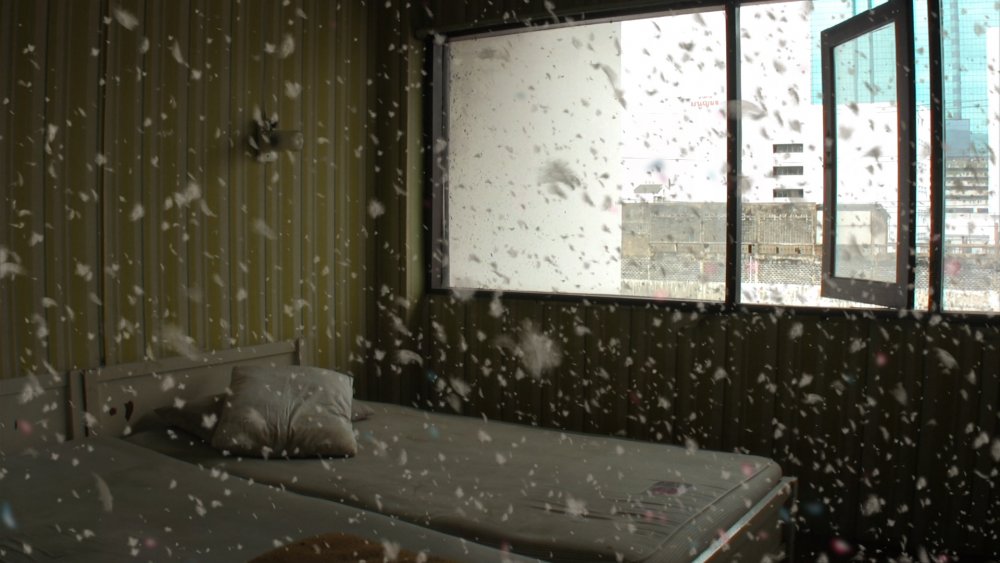
Morakot (Emerald) (2007)
Credit: Courtesy of Kick the Machine Films
In Morakot (Emerald) (2007), on the other hand, it’s through the windows of the titular Bangkok hotel that the memories of its former guests stream back into the abandoned building, which was erected during the economic boom of the 1980s and later fell victim to the 1997 Asian financial crisis – a simultaneous symbol of Thai prosperity and decline. The memories take the form of floating white particles – they could be dust, feathers or spirit matter – that fill the dilapidated rooms, transforming them into mnemonic snow globes. Apichatpong’s regular actors Jenjira Pongpas and Sakda Kaewbuadee appear as sleeping wraiths, their dreams materialising as bright-coloured particles speckling the cloud of white.
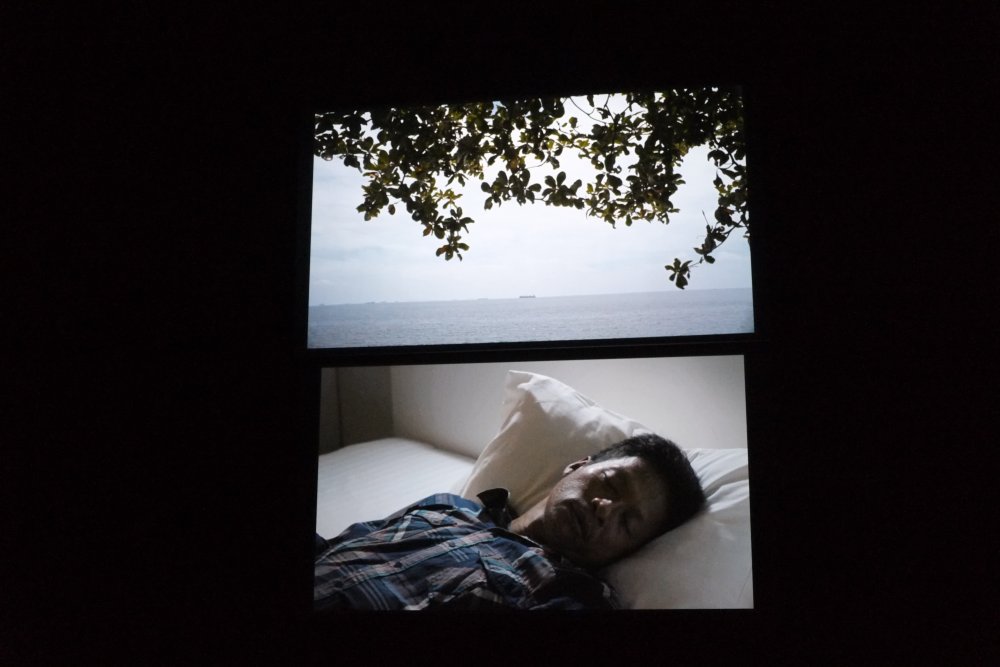
Fever Room (Gwangju, 2015)
Credit: Courtesy of Kick the Machine Films
This is just one of several instances in Apichatpong’s films that feature the colours of Christmas lights as oneiric manifestations. This tendency, also found in his installations and the stage performance Fever Room (Gwangju, 2015), is brought to a spectacular culmination in Cemetery of Splendour when those colours, emitted by the sleeping soldiers’ periscope-shaped tubes, bleed into the fabric of the film itself, disintegrating the narrative boundary between reality and dream.
Apichatpong’s mode of addressing facets of recent Thai history through his long-time actors, electing them as vessels for the nation’s psyche, is another signature, one that’s become more prominent as his films have taken an increasingly political slant over the last decade. This development, which the director credits to the spread of social media and the attendant emancipation of information, is evident in the comparison between Ghost of Asia and Sakda (Rousseau). From 2005 and 2012, respectively, both shorts star Sakda and question the master-puppet relationship between director and actor.
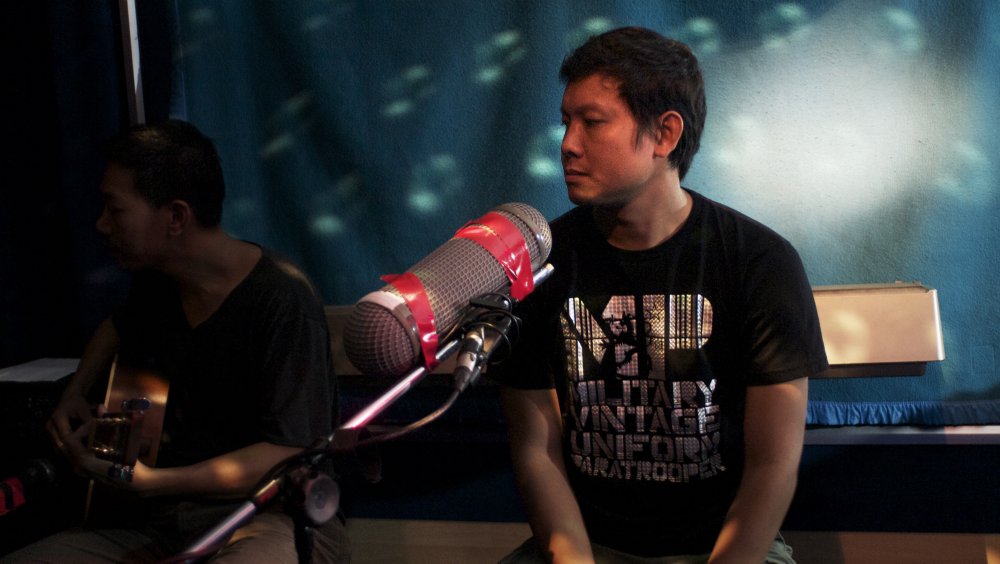
Sakda (Rousseau) (2012)
Credit: Courtesy of Kick the Machine Films
The first, co-directed with Christelle Lheureux, is amusing and upbeat as a child’s voice shouts out commands – “Brush your teeth”, “Take a shower”, “Build a house” – that Sakda follows with robotic determination, his actions sped up to a frenetic pace reminiscent of silent-era slapstick comedies. The later film, which extends the critique of manipulation and control beyond filmmaking, is pensive and profoundly melancholic. With uncharacteristically solemn countenance and locution, Sakda shares that he’s the reincarnation of Jean-Jacques Rousseau (the short was commissioned on the occasion of the philosopher’s 300th birthday). When he looks into the camera and states, “My body belongs to no one,” before lamenting his loss of freedom and individuality, it’s impossible for anyone with at least a passing knowledge of Rousseau’s theories and of Thailand’s current political situation to not read his words as a censure of the country’s failed social contract.
Jenjira has similarly symbolic roles in Cactus River (2012), Sakda (Rousseau)’s companion film Mekong Hotel (2012), and most overtly in Cemetery of Splendour. I was already familiar with Jenjira and Sakda from their many appearances in Apichatpong’s features, but the retrospective introduced me to a third star of his cinema, Krissakorn Thinthupthai. Forever in high spirits and sporting an indelible grin of sheer, explosive joy, Krissakorn’s presence personifies a purity untouched by contemporary ills – brimming with what Pier Paolo Pasolini called “spirituality”, he’s the Ninetto Davoli of Apichatpong’s oeuvre.
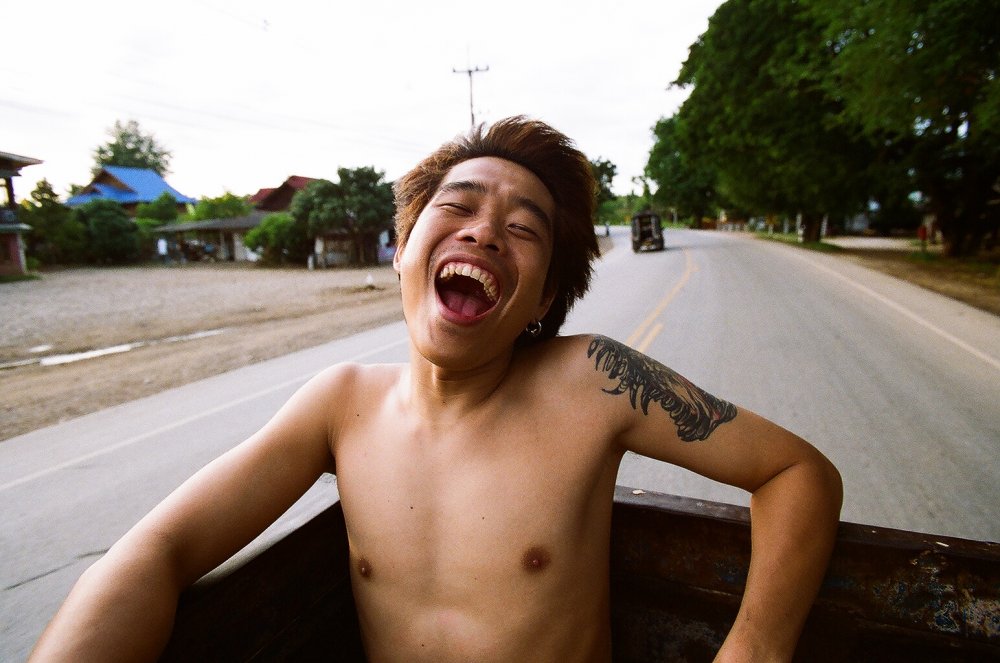
Mobile Men (2008)
Credit: Courtesy of Kick the Machine Films
This is perhaps best illustrated in the sublime Mobile Men (2008), part of an artistic anthology celebrating the 60th anniversary of the Universal Declaration of Human Rights. Sitting in the back of a speeding pick-up truck, Krissakorn’s uninhibited laughter, delight in showing off his tattoos, and his wild roar at recalling the pain of getting inked provide an exuberant expression of the joie de vivre human rights are supposed to capacitate. In Worldly Desires (2005), a mock making-of documenting the shoot of alternative versions of Blissfully Yours and Tropical Malady (2004), Krissakorn leaves the routine of the set to perform an impromptu, cathartic dance in the middle of the road; in Luminous People (2007), he is the sole beaming face in a funerary ceremony on the Mekong attended by Apichatpong’s other regulars and several members of his crew; and in M Hotel (2011), he and another young man (Chai Siris) take pictures of one another in an Edenic hotel room, their innocent and giggly enthusiasm confusing the distinction between flirtation and childhood games.

M Hotel (2011)
Credit: Courtesy of Kick the Machine Films
Encountering Krissakorn again and again during the marathon, I kept thinking back to his latest appearance, in the short Vapour, screened on the retrospective’s first night. Vapour is an uncharacteristically stifling film, its static black-and-white photography and silent soundtrack imbuing the Thai countryside with an eerie, apocalyptic feel. Although violence has always been present at the periphery of Apichatpong’s cinema – in the recollections of vicious familial abuse in Mysterious Object, the dehumanising experiences recounted by the immigrant protagonist in Blissfully Yours, the street brawl fleetingly glimpsed in Tropical Malady – Vapour marks its first irruption into the centre.
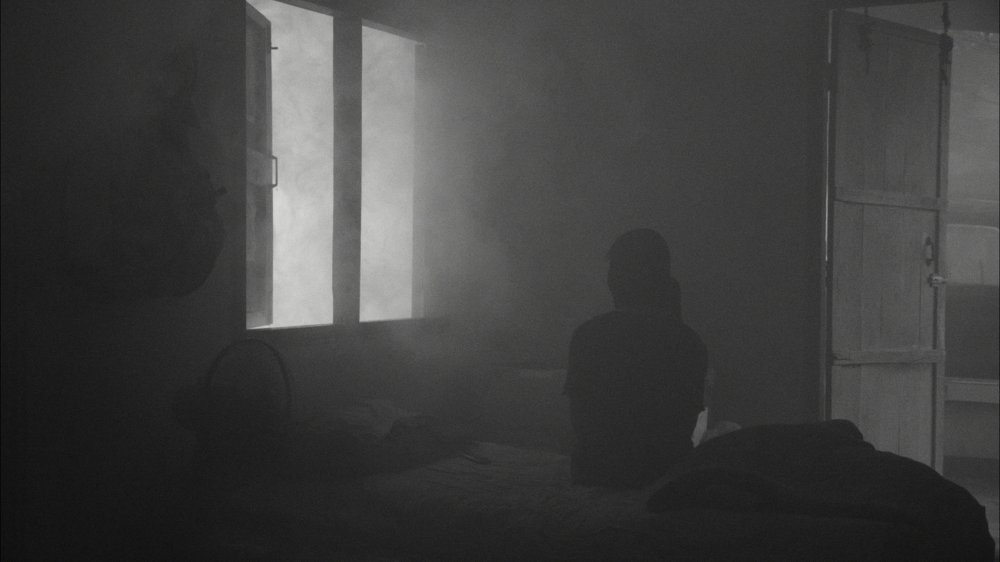
Vapour (2015)
Credit: Courtesy of Kick the Machine Films
After several scenes depicting a smoke-filled world in which ski mask-clad villagers go on with their existence seemingly indifferent to the all-enveloping smoke, their anonymity and passivity proving highly unsettling, the film culminates with two farmers torturing and crucifying a third. Such an occurrence within an Apichatpong film – James Quandt (in his introduction to the Austrian Film Museum’s Weerasethakul reader) described them as “incapable of countenancing evil” – is already shocking, but that one of the torturers should be Krissakorn (his face might be hidden inside a ski mask but his tattoo, so proudly exposed in Mobile Men, gives him away) strikes me as a stark illustration of the director’s bereaved disillusionment with his homeland, a sentiment that also underpins Cemetery of Splendour.
The only film that shares Vapour’s oppressiveness is one of his very first, 0116643225059 (1994), made during his studies at the School of the Art Institute of Chicago. An experimental representation of a long-distance phone call between Apichatpong and his mother, it loops and layers snippets from their conversation over negative (or very high-contrast) black-and-white photographs and fragmentary scenes. Repeated at high speed, these create an aggressive flicker effect reminiscent of films by Peter Kubelka or Paul Sharits, but the distinct and intense personal emotions conveyed find more appropriate comparison in the scene from Chantal Akerman’s No Home Movie (2015) in which Akerman skypes her mother (also from the US, as it happens). For both directors, their mother personifies their longing for home and the pain of separation that emanates from their respective films is devastating. It’s difficult to believe that Apichatpong should now express analogous feelings of displacement with regards to Thailand, a country he has portrayed with such warmth and devotion throughout his career.
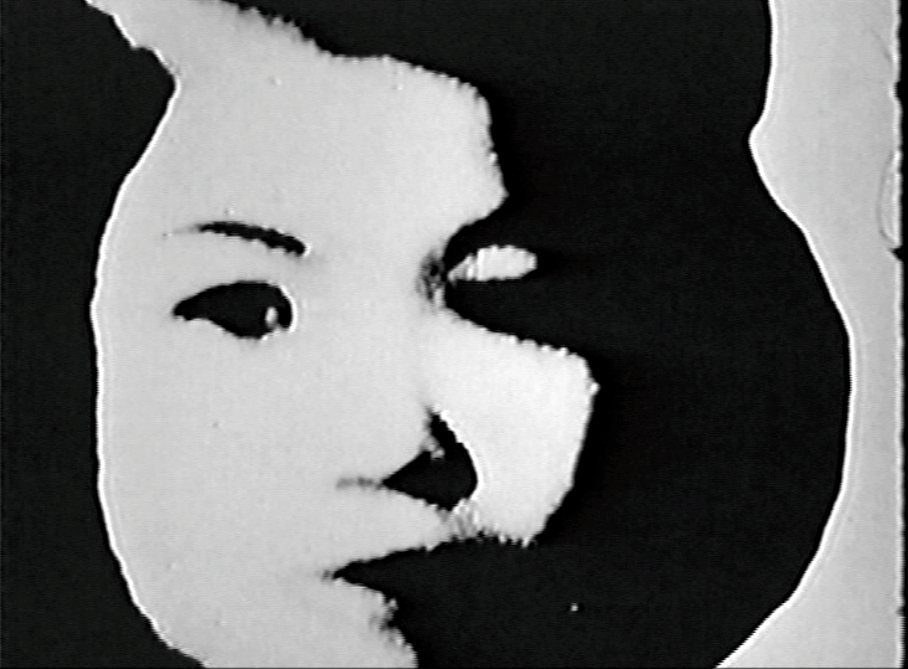
0116643225059 (1994)
Credit: Courtesy of Kick the Machine Films
Cemetery of Splendour is filled with so many elements that Apichatpong once cherished but whose significance has been corrupted. Compare The Anthem (2006), an irresistibly buoyant short inspired by the royal anthem that introduces every cinema screening in Thailand, to the heartbreaking scene at the cinema in Cemetery of Splendour where the characters stand up for the anthem, but it never starts, and they are left suspended, confused and abandoned. Or consider the framed photos of royal family members and military leaders that have always featured in his mise en scène, a documentary reflection of reality all of a sudden rendered sinister. Or aspects like institutional Buddhism and the military; once a source of affection and sexual fascination, respectively, they’re now held responsible for buttressing a despotic status quo through propaganda and oppression.
In this light, it’s unsurprising that Apichatpong intends to shoot his next feature abroad, most likely in South America, a continent he feels has a strong cultural affinity to Thailand. Like Blissfully Yours, Cemetery of Splendour also ends with a close-up of its protagonist. However, the ambiguity that had so intrigued me in Roong’s expression has dissipated. The closing image of Jenjira is so forlorn, it seems incapable of holding any optimism for the immediate future. As she stares ahead, straining her eyes open and trying to wake from the wretched dream of the present, her helplessness encapsulates the torment of a nation stuck at an impasse too surreal to comprehend, let alone oppose.
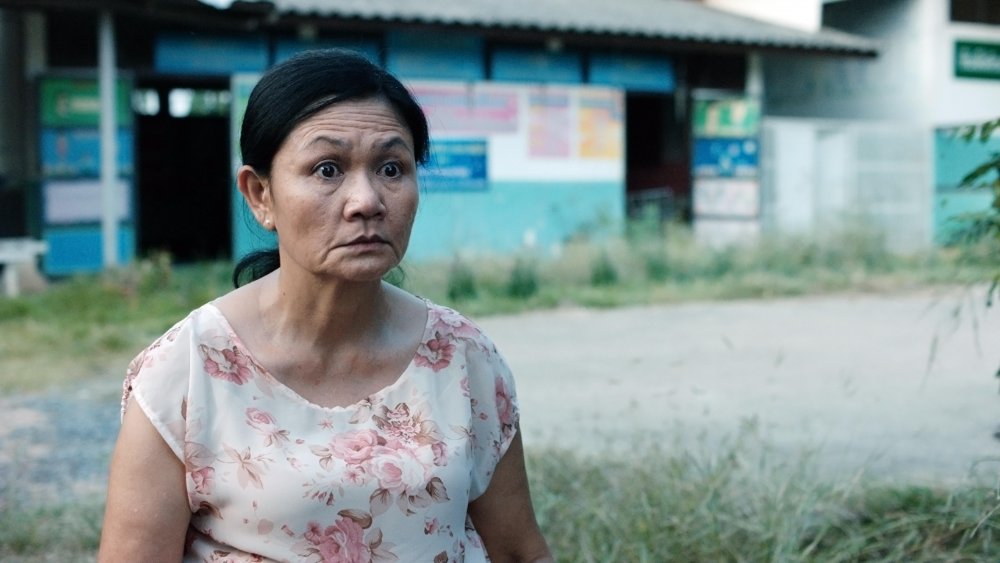
Cemetery of Splendour (Rak Ti Khon Kaen, 2015)
-
The Digital Edition and Archive quick link
Log in here to your digital edition and archive subscription, take a look at the packages on offer and buy a subscription.




